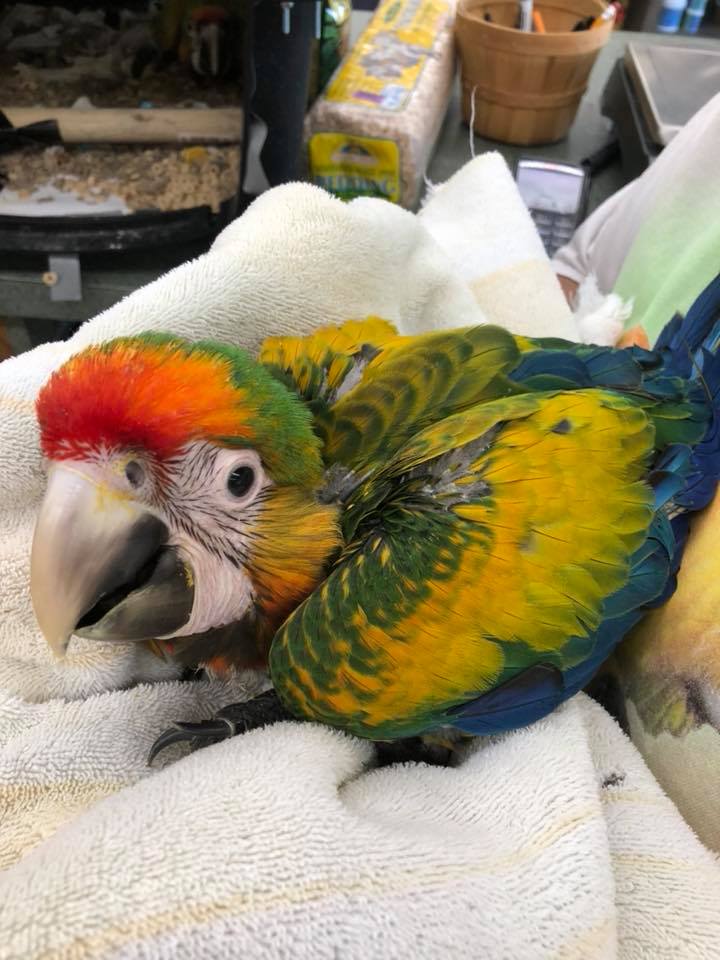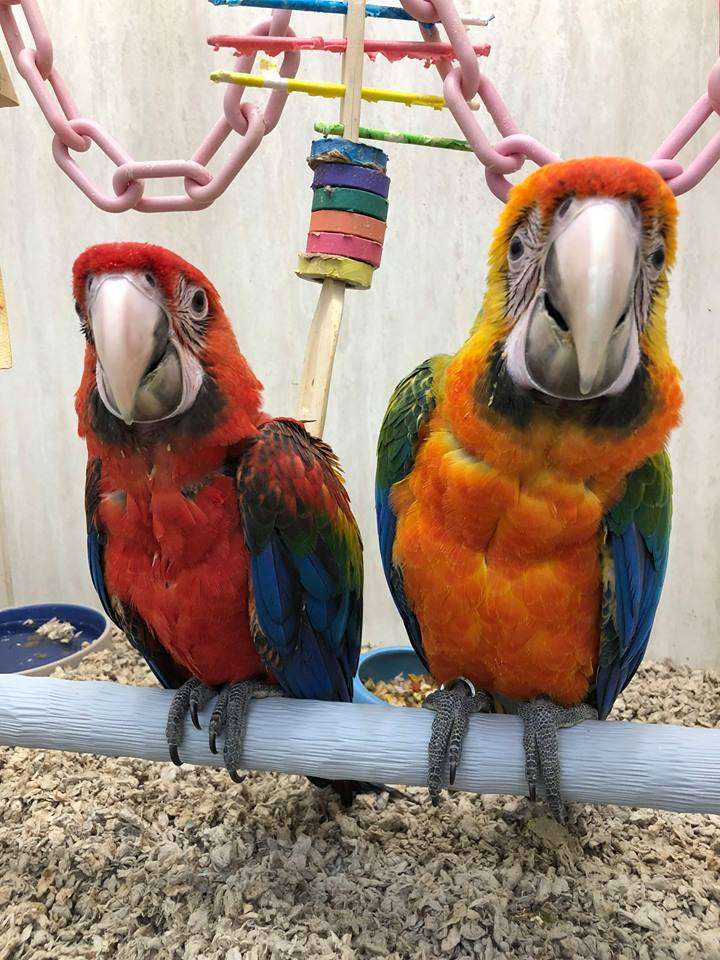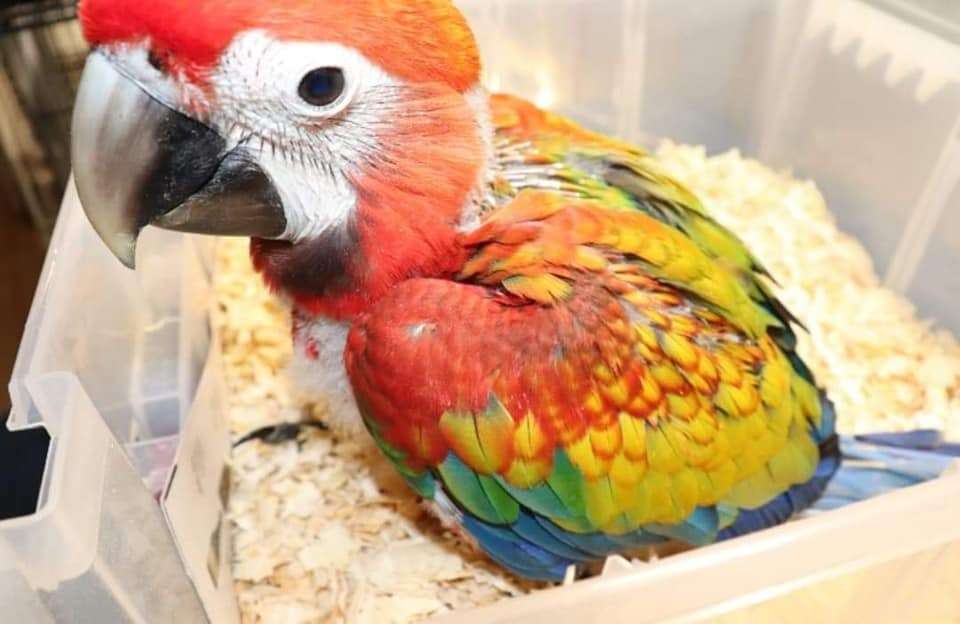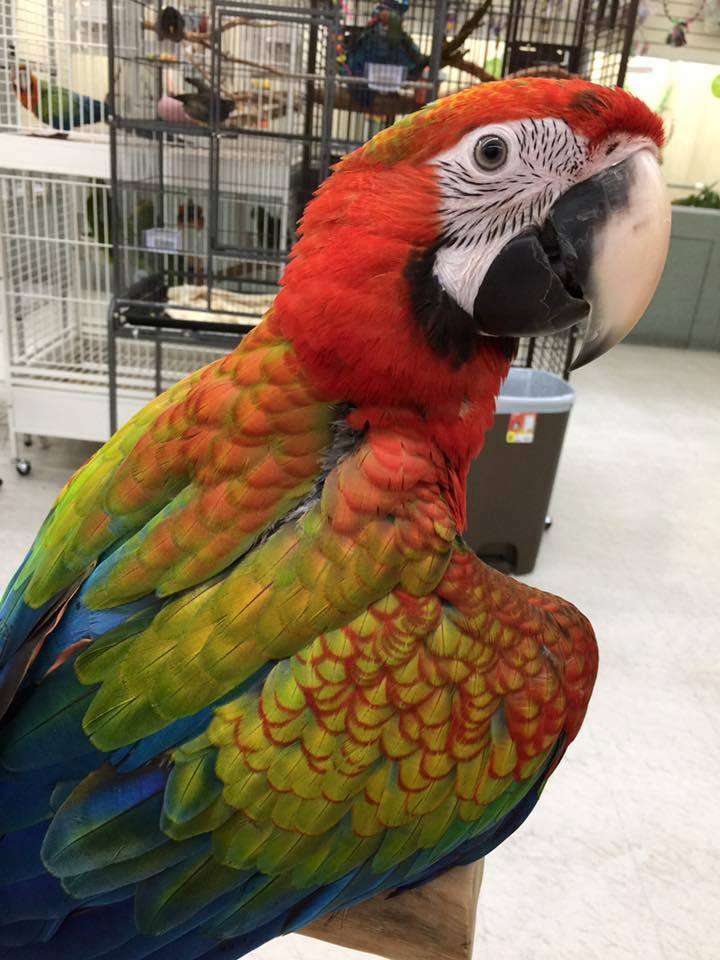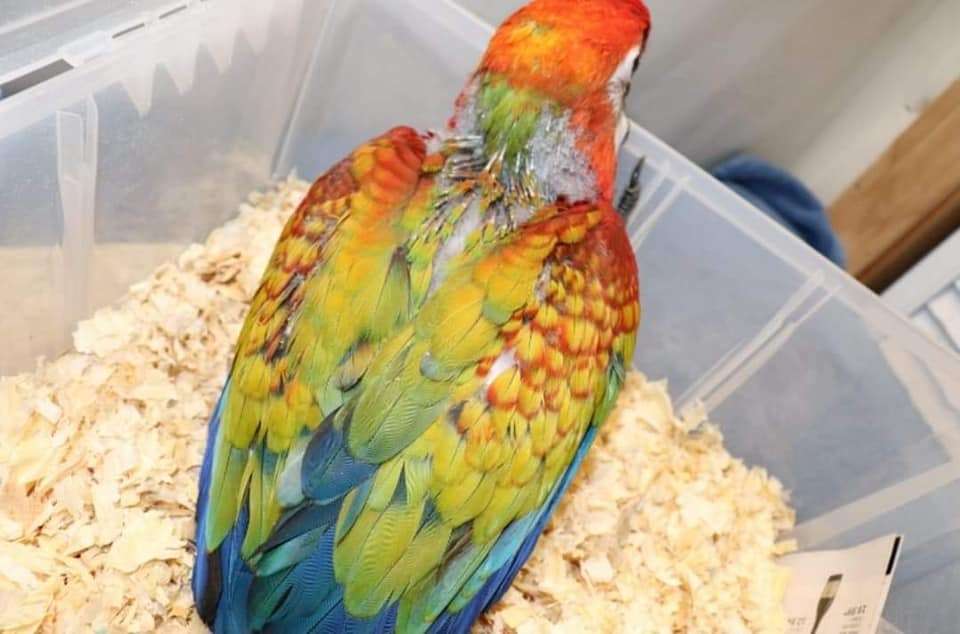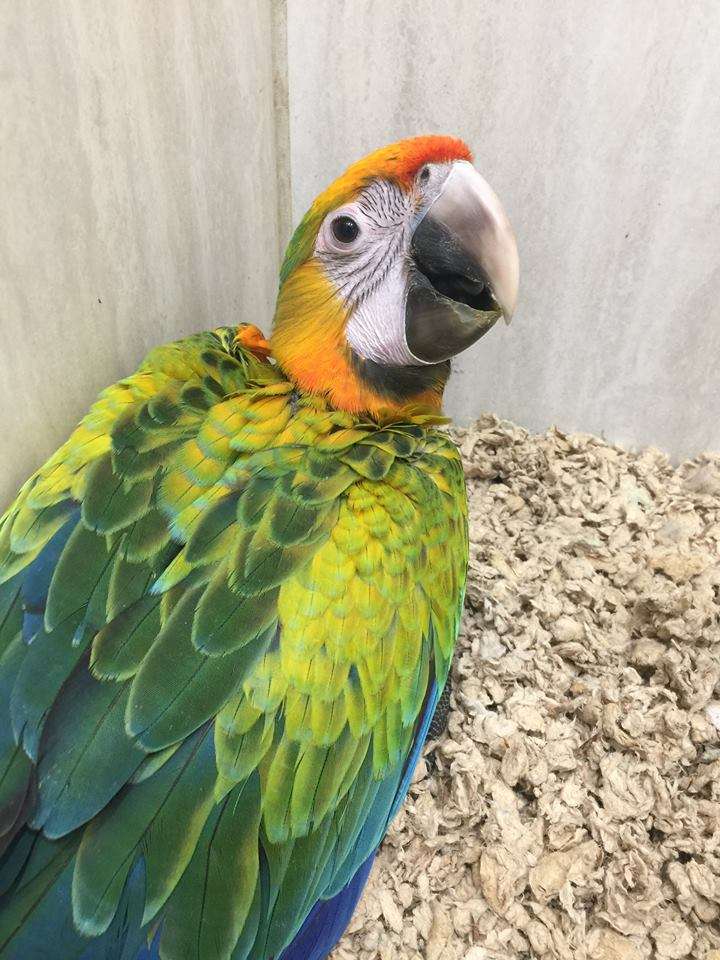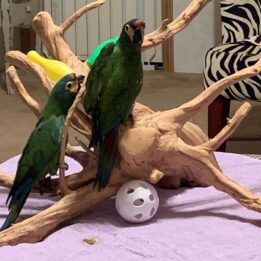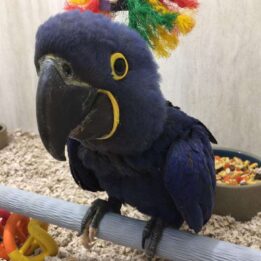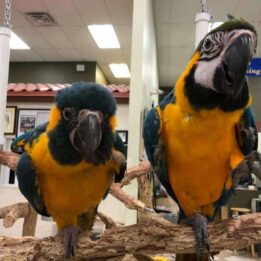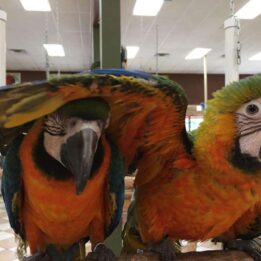Camelot macaws are second-generation hybrid macaws, bred by crossing a scarlet macaw with a Catalina macaw, the latter itself being a hybrid between a scarlet and a blue and gold macaw.
Camelot Macaw size is 33 inches in length from beak to tail. Their chests and stomach are a mix of bright orange and red. They have red patches on their face, head, and neck. Their backs, wings, and tail are a mix of greens, blues, oranges, and yellows while the underside of their wings and tail are yellow. Rare Camelot Mcaws have a yellow dominance which makes their feathers from their head to their tale a golden yellow. Their beaks are black and white. They also have white skin on their face with a small black, and orange feather pattern that is unique to each bird.
Color Orange, green, and blue
Size 33.5-34 in (85-86 cm)
Weight Around 2 lbs
Lifespan 50+ years
They live 50 to 85 years, and some even older due to modern healthier diets, exercise, and mental stimulation. Macaws are not a parrot for first-time bird owners, and a lot of thought and consideration should go into the idea of getting one for a companion bird.
Temperament
The Camelot macaw is bred for its colors than its personality. These birds tend to be unpredictable and even change temperamental traits as they age. A sweet and social bird as a baby can turn into a cranky and ill-mannered one. To get the best bet when getting a Camelot macaw, understand it when it is around 8-10 years of age. That way, its personality will be easy to gauge. A well-rounded Camelot can be an affectionate, curious, and humane pet to have.
Feeding
You can feed you Camelot a diet of fruits, seeds, nuts, and commercial pellets. In addition to these, any nutritional food that is good for you, you can offer your parrot. Do not feed birds fruit seeds, avocados, chocolate, onions, apple seeds, uncooked beans, uncooked rice, alcohol, or caffeine as these can cause serious medical problems, and kill them.
Care
Clean out the cage every other week, and replace the food and water dishes every day with fresh ones. Do a complete disinfecting of the cage at least once a year. Clip the feathers to that the bird does not escape through an open window. Trim the nails and beak periodically to escape its wrath, and also to ensure that they don’t become overgrown.
Health problems
Camelot macaws tend to suffer from proventricular dilation disease, kidney disease, infections, beak malformations, psittacosis, papillomas, and other diseases, most of which can be kept at bay by regularly taking the bird to a veterinarian.

